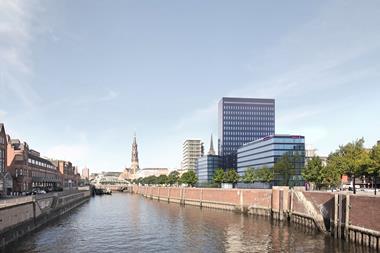The UK can build 300,000 homes a year. It is possible and we’ve done it before. But the last time the UK built that many homes in 12 short months was in the 1960s and that achievement had its seeds sown more than 60 years ago.

Sir Winston Churchill’s 1951 Conservative election manifesto contained the following ambitious pledge: “Housing is the first of the social services. It is also one of the keys to increased productivity. Work, family life, health and education are all undermined by crowded houses. Therefore, a Conservative and Unionist Government will give housing a priority second only to national defence.”
There has been debate about Churchill’s record in recent times, but I doubt anyone would argue with his determination to get Britain building.
After winning the election, Churchill charged housing minister Harold Macmillan with the task of building “houses for the people”. Just a couple of years later Macmillan achieved his goal and by the mid-1960s the UK was building more than 350,000 homes per year.
So how did previous governments do it and why haven’t we achieved the same level of housing completions for more than 40 years?
For around 20 years from when Churchill handed Macmillan the herculean task, there was cross-party consensus that much more housing was needed and about half of it should be built by local councils. The theory was that the state would intervene and make up the shortfall left by private housebuilders. But over time, government intervention waned and housing completions fell again.
In 2010, the new coalition government put housing back at the top of the political agenda again, when prime minster David Cameron pledged to build 300,000 homes a year.

However, we have failed to hit even 200,000. While housebuilders may have increased delivery to an extent, we saw a dip in social housing being brought forward by housing associations.
At the same time, investors became cautious about developing in the build-to-rent market and councils had all but completely halted social housing construction back in the 1990s. History shows us that private sector housing alone has never met housing demand.
Fast forward to 2019 and we see new investors in the housing market across the country. In the rented market, it is not government investors but institutional investors that are developing at pace in many of our regional and city centres.
Build-to-rent provides a helpful solution for part of the housing market and suits a particular demographic that struggles to access mortgages; it works in the context of a flexible employment market that is looking for flexibility in housing. This creates new markets in city centres and has a regeneration impact on city fringes.
This investment alone, while a welcome addition to providing choice and accessibility to housing, will not solve the housing shortfall.
Three key issues
For me, we need to address three inter-related issues: meeting affordable housing demand; addressing the structural changes in our town centres; and delivering infrastructure – both physical and community – to support new housing. We cannot solve the housing crisis without addressing all three issues, as all are dependent on one another.
For example, history has shown us the importance of good design and, crucially, the provision of infrastructure and employment opportunities. These will support the development of communities and of well-connected, good-quality housing stock. Otherwise we risk creating stranded communities.
Collaboration is required to deliver this step change. If local councils, private developers and investors have a better understanding of each other, they will recognise that although they have different perspectives, they have the same drivers. Once they align behind a set of values and agree a way of doing business together, having a clear plan and “skin in the game”, delivery is more achievable.
When the private sector brings commercial experience and the public sector supports development, the combination is hard to beat
Investors will be encouraged by councils’ actions. If they commit to supporting the infrastructure, seek funding to enable delivery, are prepared to invest their land in schemes and provide strong pro-growth civic leadership, then investors will have an incentive to take a longer-term view of development. If, for example, a build-to-rent investor sees a local council is sharing the investment risk, then it is more likely to commit to long-term investment in place and community.
Struggling town centres can be brought alive by converting the oversupply of retail into quality homes. These must be supported by the creation of agile workspace and an improved leisure offer. This represents a real opportunity to help deliver new housing and employment opportunities in what are often already well-connected places. It takes vision and a long-term approach to achieve the results that sometimes only collaboration can deliver.
In providing strategic advice to many local authorities, we recognise the advantages of complementary skillsets being brought together through collaboration between the public and private sectors. When the private sector brings commercial experience and the public sector supports development, the combination is hard to beat.
Building the homes that the UK requires need not be an impossible task. Facilitating private and public sector collaboration is the key to achieving this aim. With each side understanding and delivering on the other’s expectations, both will flourish.
Topics
PW Perspectives: the structural changes affecting the industry
- 1
- 2
 Currently reading
Currently readingCollaboration is the key to meeting housing targets
- 3
- 4
- 5
- 6
- 7
- 8
- 9
- 10








































No comments yet